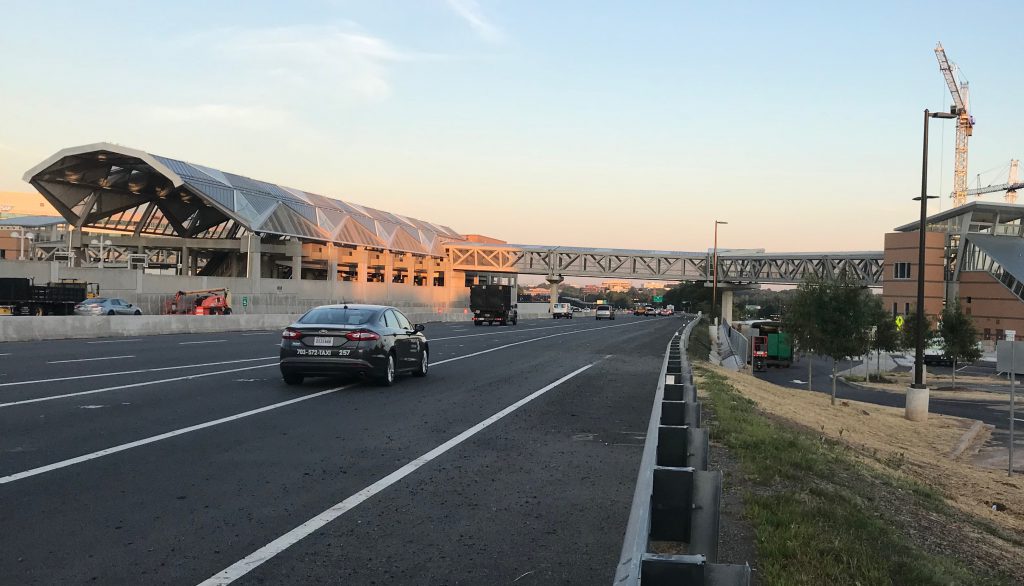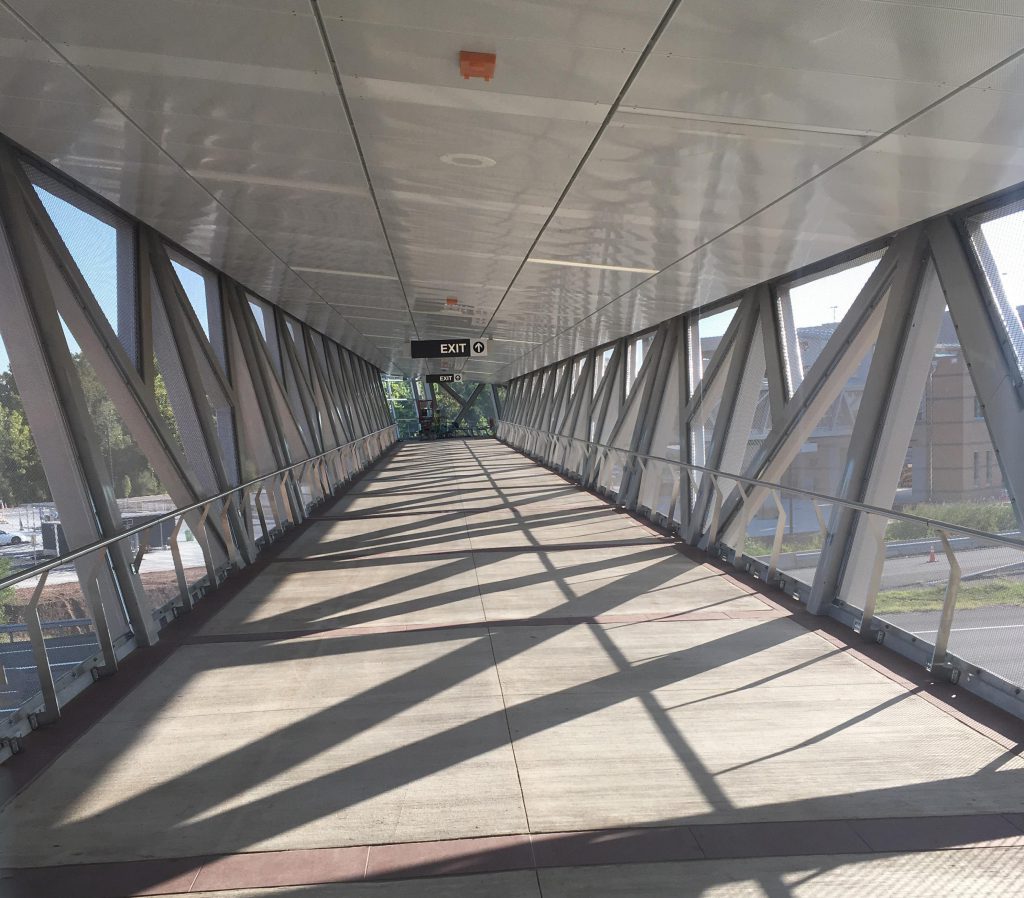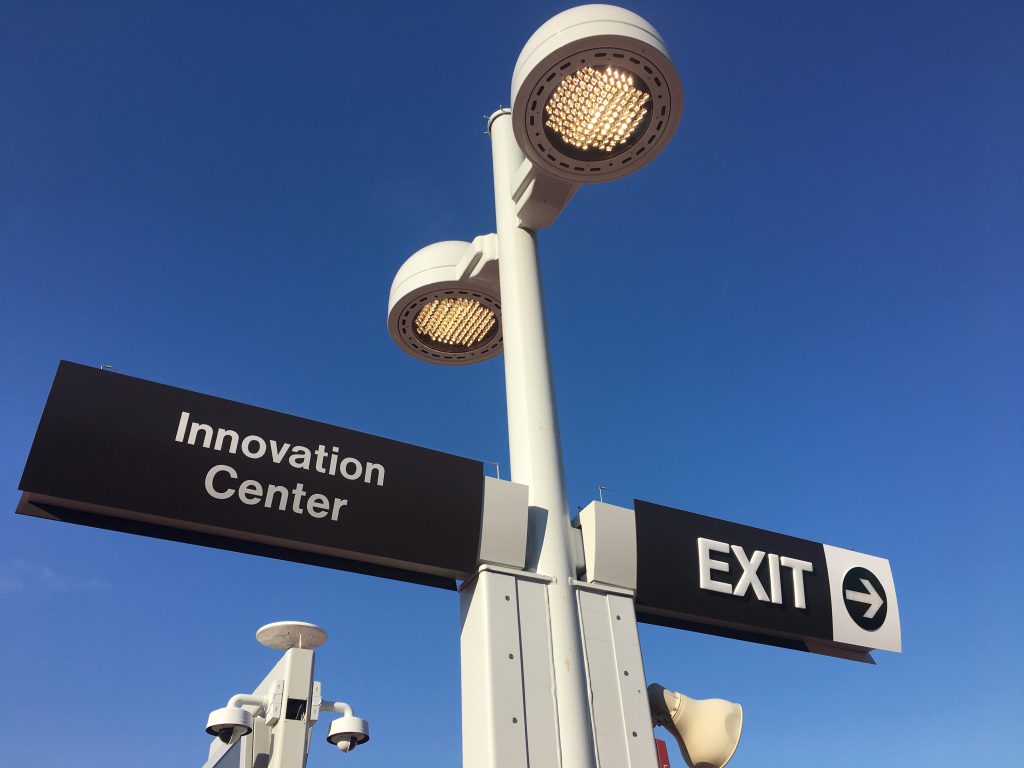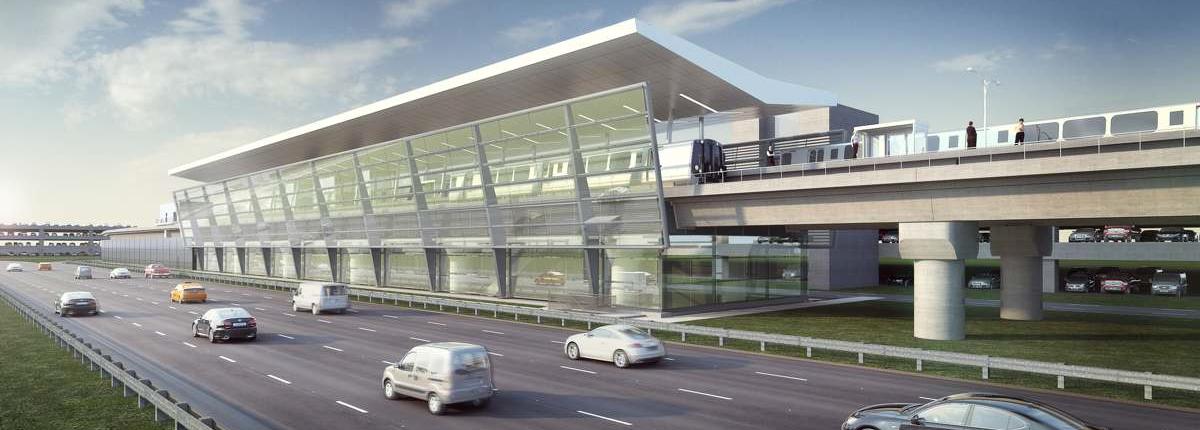The Silver Line Phase 2A project will have a positive impact on the lives of Metro riders. But what many don’t realize is there are many additional improvements along the project’s nearly 12-mile stretch that will impact the safety and accessibility for the surrounding community.
Improved Roadways
Over the course of the Silver Line Phase 2A project, Capital Rail Constructors (CRC) has rebuilt many miles of road along the project to bring them up to modern standards. This includes widening roads, fixing roads in despair, and adding new signage, guard rails, and barrier walls to ensure all roads are up to modern safety codes.

Outside of the main arterial roads, project improvements include updated and improved limited access highways and local roads in expectation of increased usage by Metro riders who will come and go from station pavilions (access areas to the stations). This includes the addition of more turn lanes and traffic signals to keep traffic flowing smoothly.
For pedestrians and bikers, there are additional sidewalks and bike lanes for access to pavilions and side streets. Cyclists will also enjoy racks and lockers to make their experience easier and safer.
Pedestrian Bridge Spans
The Silver Line Phase 2A project includes 31 pedestrian bridge spans on the north and south sides of each station and over the Dulles Toll Road to ensure people can safely and effectively travel between the station’s parking lots and pavilions. Additionally, community members will be able to utilize these spans to cross from one side of the highway to the other without having to enter the Metro station or pay a fare.

Each span connects to a pavilion with two elevators, two escalators, and a stairwell to ensure commuters can comfortably enter and exit the Metro stations during rush hour.
But pedestrian bridge spans are more than just elevated platforms to walk from Point A to Point B – they’re gateways to new future development. The Silver Line Phase 1 saw a tremendous amount of growth and development surrounding its stations, and a similar positive impact is expected along the Silver Line Phase 2A project.
Ryan McBride, a senior project manager at CRC, said the project will transform its 12-mile stretch into Loudoun County, Virginia.
“If the development around Phase 1 doesn’t give you an idea of what kind of impact these bridges will have, I don’t know what else does – that whole area is buzzing,” Ryan McBride said. “Either construction or design is underway to put up mixed-use space – apartments, condos, retail. Really, the pedestrian bridges are the means of travel between these really cool new developments and the Metro system.”
Site Lighting

Lighting on the Silver Line Phase 2A is designed to make passengers and pedestrians’ lives easier and safer. The Silver Line Phase 2A stations will be the first on Metro to feature all-LED lighting in pavilions, parking garages, and its surrounding areas. In total, CRC has installed more than 200 new LED lighting systems on the line.
More efficient than traditional incandescent lighting systems, LEDs bring across-the-board savings. LEDs use 75% energy than incandescent lighting and last 15 times longer than typical incandescent light bulbs, minimizing energy and maintenance costs.
Also, unlike standard incandescent lighting, LEDs can be pointed directionally to areas where light is needed most.
For visibility, safety and security, LEDs cannot be matched.
Metro expects a high volume of pedestrian traffic walking from parking garages to pavilions to stations and vice versa. Lighting will be clear and bright for anyone using the Silver Line Phase 2A stations at dawn, dusk, or night.
